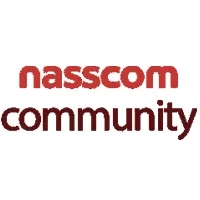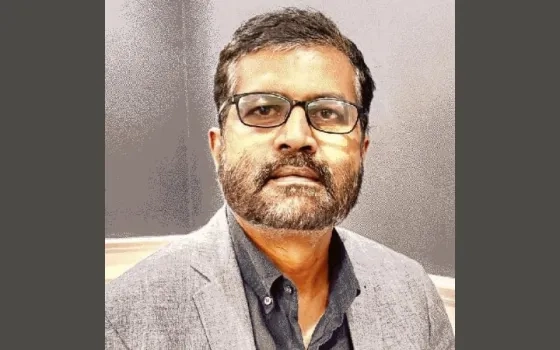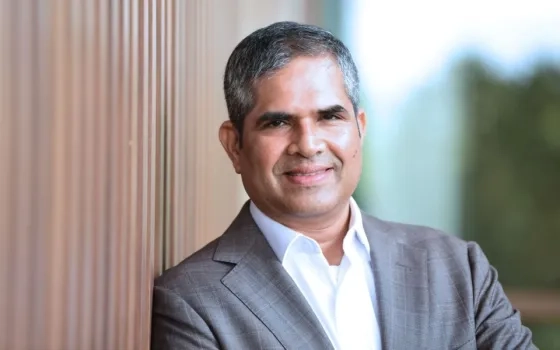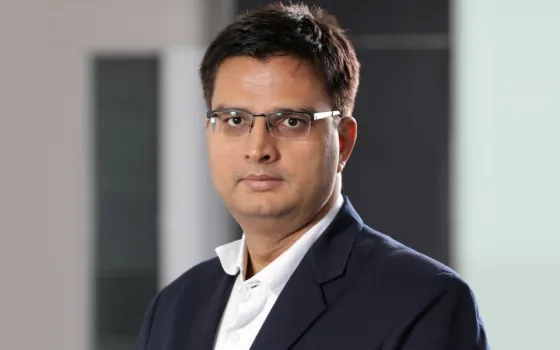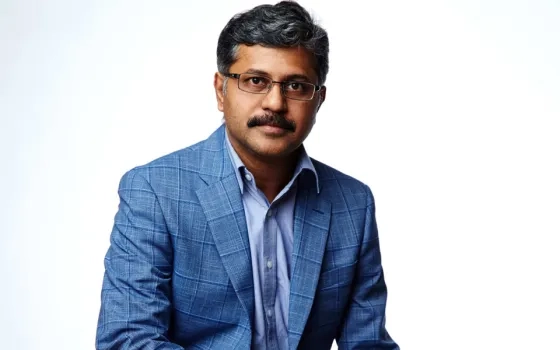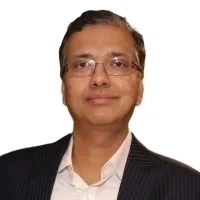The world is going through challenging times. Industries are forced to revisit their product and marketing strategies, as we have to embrace a ‘new normal’. What better than to weigh in on the views by one of Indian IT’s doyens – Rajiv Mody, CEO of SASKEN Technologies. He has built a legacy for the Indian IT industry, establishing a foothold as one of the country’s leading product entities and charting new paths in areas like automotive, 5G, satcom, and telecom. Read on to know the success of SASKEN Technologies.
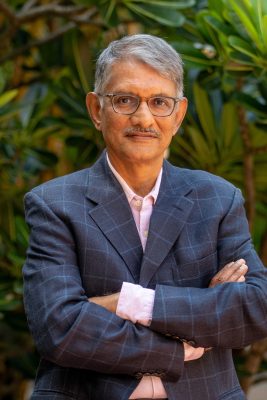
SASKEN has weathered many storms in the world of IT & communications – what is your single biggest learning through it all?
At every point in Sasken’s journey, we have held the belief that adversity and challenges present opportunities. I would like to recall a few such discontinuities, which we have capitalized on and built vistas for growth. One such disruption was in 2001 during the dotcom bust, which propelled us to explore the world of Wireless, Broadband, and always-on technologies.
Retaining our technology DNA proved to be vital to handle the second wave of disruption in 2009 which radically altered the landscape of the Telecom segment. We managed to successfully broaden our horizon to address opportunities in the area of Satellite Communication and Automotive segments. Similarly, in 2014, we could see opportunities arising from the widespread adoption of Digital technologies and successfully added capabilities to engage our customers with meaningful Digital solutions. Amidst this change, the one constant has been our strong commitment to be a value-centric organization that strongly believes in a balanced approach to deliver on its responsibility towards all major stakeholders including employees, customers, and investors.
You are one of India’s original product behemoths. How have you retained the relevance of this core competence while winds of change have constantly blown in IT?
It is a matter of pride to share with you that Sasken’s engineering capabilities has powered over a billion semiconductor devices that have found their way into several cutting-edge products used globally. It is our estimate that we have helped launch 100+ unique products in areas of Consumer Electronics, Enterprise Devices, Satellite Terminals, and Automotive Infotainment systems whose combined shipments would easily exceed a billion units. This is testimony to your labeling us as an original product behemoth from India. We have carefully cultivated a highly-capable R&D team led by a distinguished professor and industry veteran who work on cutting-edge technologies like 5G, IoT, Artificial Intelligence, Machine Learning, etc. This is complemented by our Solutions team that nurtures highly capable fresh hires from engineering colleges and provides them an environment to craft interesting solutions and demonstrable experiences/proofs-of-concepts. We have seen that these investments have resulted in contributing to an engineering talent that can readily fit in to key development programs in the shortest possible timeframe.
Today, India is upping its game in product development – how do you think SASKEN has an edge?
For the last few years, the global quest has been to create connected living that fosters collaboration and builds communities who have better access to a wide range of services. Central to all these are technologies such as Cloud, Communication (Short Range and Long Range), Cognition (AI and ML), and Multimedia. These technologies and the underlying silicon platforms have made it possible to introduce new products more rapidly than ever before.
At Sasken, we believe that this will be our holy grail for the foreseeable future and we will doggedly pursue opportunities arising out of these technologies irrespective of undulations in the market. Keeping the dynamic technology and vectors of change, we have crafted a new strategy to position ourselves as the ‘Chip to Cognition’ company.
In the Automotive arena, we have built products addressing the areas of Connected Cars including solutions in Infotainment, Telematics, and Autonomous Driving. Additionally, we have combined our strengths in Digital to create innovative solutions for aftermarket automotive products that help provide a safer driving experience. Other solutions in this area target automobile dealerships to enable the efficient management of customizations as per individual requirements during the purchase process of an automobile.
In the Enterprise Device arena, we work with a majority of product manufacturers to provide robust security management solutions to safeguard enterprise assets.
Industry 4.0 has embraced principles of connectivity to create a smarter manufacturing and has frequently looked up to us to offer expertise in the area of connected and cognitively enabled process automation/manufacturing solutions.
At a time when most IT companies and co-founders were looking to consolidate their presence in the US, you came back. Can you tell us how this move helped you in India? What kind of support did you receive from industry organisations, the ecosystem at large?
In the early days, it was difficult as getting things done required working with multiple agencies. Fortunately for me, I got in touch with the Dewang Mehta who, through his charismatic ways and optimism, helped me feel reassured that establishing a company out of India would be a rewarding experience. He made sincere attempts to understand our business and saw us as being different from the conventional IT players. It was his persistence that resulted in the formation of the NASSCOM Product Council which I was inducted to head and was a part of from 2001 to 2008.
If I were to sum it up, the support from NASSCOM, the access to talent, and the pride of building a differentiated product engineering company based in India were the factors that influenced me to be homeward bound.
One of the most critical investments you made in your company was in its IP. Today’s product companies understand the significance of IPs. What advice do you have for them?
We realized the importance of IP way back in the early 90s. This led us to appreciate the need for investing in the creation of our portfolio of IP. While the process of creating and obtaining global patents is a fairly expensive one, we remain committed to continually investing in this unique ability of ours. Creating patents requires us to be abreast with the process of standardization and participate in standard bodies such as ETSI, IEEE, etc. A testimony to this is our modest yet valuable global patent pool that numbers close to 75 now. A case in point is a patent, we recently filed, in Method and System for Consensus in Permissioned Blockchain. The patent proposes a new consensus mechanism where a node is selected at random in the network for the block creation, with the others validating and accepting the block. This is done for every block created with a different node selected randomly each time. By doing so, this mechanism adds an additional layer of security from potential denial-of-service attacks and offers more flexibility.
My simple advice is this: Stay the course, learn to do what you like, and like what you do. We underestimate our strength and resilience and therefore end up not doing what we are capable of. Keep it simple, focus, and put in the hard work; the dividends of smart labor can never be denied.
Today, Innovation is imperative for the survival & growth of industries. But this is easier said than done. What do you think large enterprises can do to ensure this innovation mindset is firmly entrenched in the minds and psyches of leaders of today?
This is a hard problem to solve but certainly one that can be achieved. The crux is maintaining a core set of people who are both curious and able. There is no substitute to identifying people who remain techies at heart and do not morph into being meta-managers, which blunts their tech quotient.
Another dichotomy is that when you build an organization you need to invest in processes that help the organization scale and rigorously follow practices that abet Business Excellence. Sometimes these processes may come in the way of innovation due to the inherent rigidity of quality systems. This is where I believe one has to make prudent bets through investments in more nimble startup companies who are working on technology-based solutions that have a wide range of applications.
Finally, I am a big believer in Clayton Christensen’s gospel advice that discipline and process-centric approaches are necessary to create a culture that helps people be adaptive and innovative.
Tell us a bit about your decision to pivot back to your core competency in the years 2014-15, and how it has played out for you in the past 5 years?
Through the years, we realized that our core strengths lay in the following areas
- Embedded Software and Semiconductor Platforms
- Communications (Short Range and Wide Range
- Multimedia
- Hardware
- Cloud and Digital Technologies
Since 2014, we have capitalized on these core competencies and successfully diversified our segmental focus to embrace Automotive, Industrials, Consumer Electronics, Enterprises, Satellite Networks, and Transportation. Around 2015, we also identified the growing need for Digitization and Digitalization and started building our capabilities in the Digital space, particularly in areas overlapping with the embedded domain.
As a case in point, the focus by Automotive OEMs on connected car, safety and autonomous systems, and a suite of telematics applications completely rely on the strengths of our core stack. When we reached out to the key constituents of the Automotive electronics value chain, we found that Tier-1 suppliers to global OEMs were positively surprised and delighted with the maturity of our knowledge and the core elements required for product realization. Around 2014-15, we were entrusted with developing one of the world’s first integrated IVI and RSE systems that was featured in one of the most premium and luxury Automobile brands in the world. We have similar exemplars in all the industry verticals that we serve.
Similarly in the Satellite space, we have executed multiple successful programs for turnkey development of multiple portable, vehicle-mounted, and handheld satellite terminals. These products have been used to provide critical communications in oil exploration, global maritime communications, and mountaineering; often in very demanding and challenging terrains.
As NASSCOM puts it, we believe that our knowledge stack is going to be extremely critical to address the needs of global product development in the tech decade.
Today, the wireless technology sector along with added capabilities in advanced technologies is a vibrant business opportunity. How is SASKEN leveraging this?
Since the late 90s, Sasken has stood firmly committed to investing and staying at the forefront of the wireless evolution. We believe that at any point, we will be in the midst of the wireless continuum and work on all technologies including legacy, current, and future. We see wireless as driving all aspects of networking including:
- Personal area networks (PAN
- Local area networks (LAN)
- Wide area, terrestrial, and satellite networks (WAN, TAN, etc.)
In PAN, we have followed the evolution curve and worked with a host of technologies including RFID, NFC, ZigBee, etc. In LAN, our focus has been to follow the evolution of Wi-Fi including its current avatar, Wi-Fi 6. In WAN, we have worked on the full spectrum of mobile technologies from 2G to 5G, civil defense networks such as Tetra and satellite technologies including V-Sat and Geo-Sat.
In my opinion, the growth of wireless and, in particular, the possibilities that 5G will bring forth makes it a very exciting inflection point that will have an impact on almost every single industry.
We have built solution accelerators that can incorporate the benefits of 5G wireless in future seamlessly for the various industries we serve. An interesting use case of 5G can be found in autonomous or self-driving vehicles moving at a very high speed, interacting with other similar vehicles as well as the Internet, infrastructure, and other networks. Smart cities, wireless sensor or IoT networks, 3D/4D video streaming and interactive services, augmented reality applications, high bandwidth cloud services are some areas which will demand such high communication services.
At Sasken, we are building solutions and investing heavily in 5G technologies that will enable use cases such as V2X connectivity, digitizing factory floor, and automated driving.
This is part of our ongoing series TechVoice, where we bring to you the leaders of the industry talk about the latest in innovation, technology and trends in their industry sectors. If you want to contribute, write to sindhuja@nasscom.in
For more updates, follow NASSCOM CoE IoT-DSAI on LinkedIn, Twitter, Facebook, and Youtube







